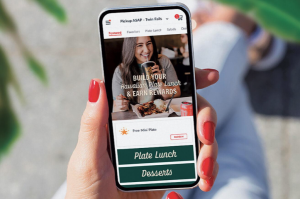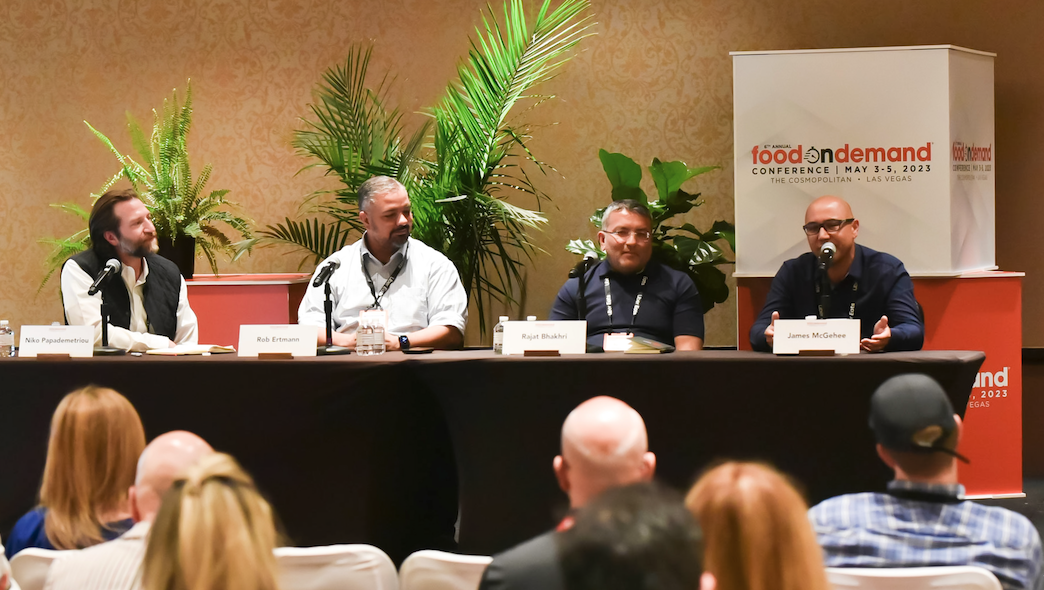The core customers at Dave’s Hot Chicken are “the 19- to 35-year-old pot-smokin’ dudes that live in their mother’s basement,” said James McGehee, the company’s finance chief. Dave’s has tailored its technology stack and deployment of customer data with that guest in mind, he continued, so what works for Sweetgreen or Chipotle might not make sense for the fried chicken concept.
“We’re not going to be the company that pushes product on you,” McGehee said of marketing and other customer engagement tactics. Instead, Dave’s relies on social media, which is what helped catapult it from a pop-up stand in a Los Angeles parking lot to a concept that’s opened more than 120 restaurants in the last two years.
Instagram was its primary platform, now with 825,000 followers, and about six months ago it added TikTok and has nearly 850,000 followers. Dave’s leverages both platforms to engage with existing customers and give it a leg up when entering new markets, with noticeable results.
A restaurant in Portsmouth, New Hampshire, a city with a population of about 20,000, “opened up at an ungodly clip, just because of that presence we have online,” said McGehee, speaking May 4 during a Food On Demand Conference session covering customer data deployment. The addition of TikTok has helped drive opening-week sales in new markets from $95,000 to $110,000.
“I definitely think our social imprint on the marketplace is critical to our brand,” he said.
Rob Ertmann, CEO of 42-unit Hawaiian-style concept Mo’ Bettahs, noted his brand dealt with what he called “paralysis from the creativity process” as it sought the best way to use TikTok for customer engagement purposes. At first his team was trying to come up with dances to put out on the video-based platform, but now “it’s pouring teriyaki sauce over chicken, set to a nice little beat.”

Hawaiian restaurant concept Mo’ Bettahs looks to emphasize authenticity in its customer engagement efforts, including through its app.
Recognizing how customers want to interact with the brand has been essential to how it collects and uses data. Mo’ Bettahs uses demographic and other market data to cast a wide net for customer acquisition and then starts a drip campaign with brand cues emphasizing its authenticity, Ertmann explained. It’s loyalty program likewise looks to integrate aspects of the brand’s story—founders Kimo and Kalani Mack grew up on the island of Oahu—into its messaging so “it’s not just about another offer, another offer, another offer,” he said.
Third-party delivery accounts for about 18 percent of sales at Mo’ Bettahs, and while the company would like to own those customers and convert them to its ordering channels, it’s not expending resources to do so “because it became kind of a fruitless effort.” Instead, Ertmann said, the company is focused on maximizing those channels with a focus on execution and customer service.
Dave’s, meanwhile, has found success tapping into data to learn more about customers who’ve visited four or five times but haven’t returned in 90 days. “Eighty percent of first-time guests will never show up again,” said McGehee, citing an industry average. But rather than focusing on getting those customers to come back, Dave’s is identifying the occasional user and working to reengage them with tailored offers and messaging.


